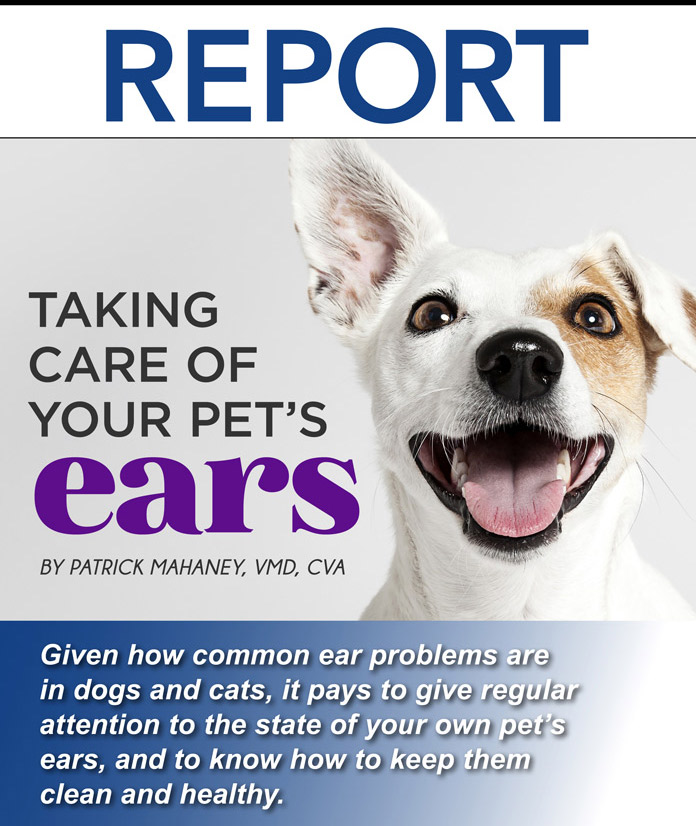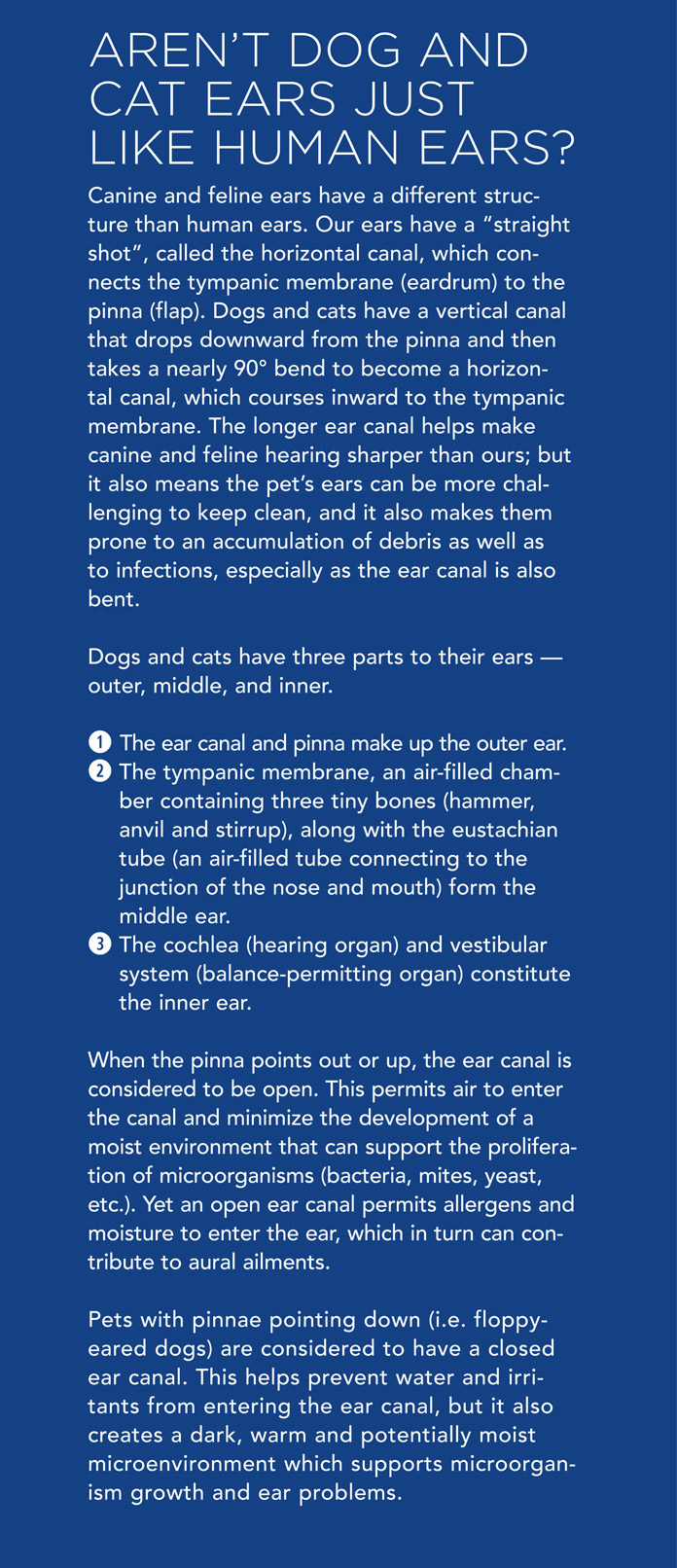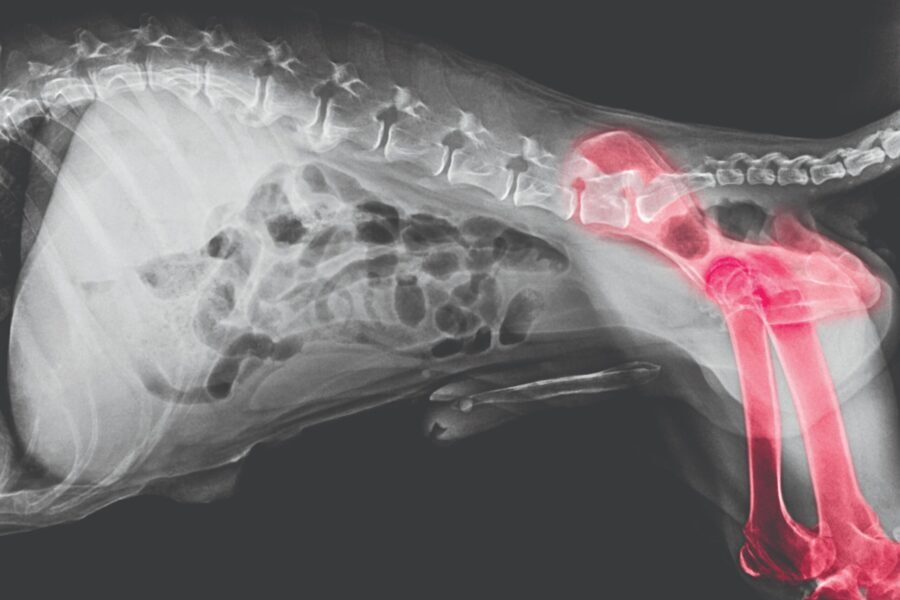Ear problems are among the most common reasons cats and dogs are taken to the veterinarian for evaluation and treatment. Yet many of these problems could be prevented or minimized with an awareness of how and why they manifest, along with some practiced cleaning effort. With the right knowledge and techniques, you can keep your dog or cat’s ears healthy for life.
What types of ear problems affect pets?
All species’ ears are basically an extension of the skin into the skull. As a result, many skin problems also impact the ears. Seasonal and non-seasonal environmental and food allergies, infections, cancer, exposure to hot or freezing temperatures or solar radiation, toxic reactions, trauma, and other factors can all damage your dog or cat’s ears.
Infections with bacteria, mites and yeast are some of the most common contributing factors to pet ear problems. These organisms may already live on the surface of the skin, or they can enter from an outside source (plant awn, soil, another animal’s mouth, etc.) and flourish in the dark moist environment inside the ear.
Internal organ abnormalities often cause changes to the skin and coat. This means the ears can be negatively impacted by glandular conditions like diabetes mellitus (deficient pancreatic insulin production), hyperthyroidism (over-functioning thyroid glands), hypothyroidism (underfunctioning thyroid glands), hyperadrenocorticism (Cushing’s disease, or over-functioning adrenal glands), kidney and liver disease, among others.
How are canine and feline ear conditions diagnosed?
Most ear problems in dogs and cats primarily affect the outer ear (otitis externa), are relatively easy to diagnose and treat, and cause mild to moderate clinical signs. Middle and inner ear ailments (otitis media and otitis interna, respectively) are more likely to cause moderate to severe clinical signs and are a greater challenge to diagnose and treat.
Besides visually assessing the outer ear and smelling for an unpleasant odor, your veterinarian should use an otoscope to permit examination of the vertical and horizontal canals (see sidebar below) and the tympanic membrane. He or she should also perform a full-body physical exam.
If any abnormalities like ear discharge are found, a sample can be collected for cytology (microscopic evaluation) and culture/sensitivity. Pending the pet’s overall health status, other diagnostics like blood and urine testing, x-rays, or other evaluation may be needed. Since disorders of the ear often cause discomfort, a pet may need to be sedated or anesthetized to better assess and treat particular conditions.
What treatment options are available?
Conventional treatment for otitis externa includes flushing with an ear-cleaning solution and applying topical antibiotic, anti-fungal or anti-inflammatory medications. More severe ear disorders, like otitis interna and media, may require oral or injectable medications or surgical treatment.
Holistic treatment focuses on treating the ear from the inside out. It includes dietary supplements that reduce tissue damage and offer an anti-inflammatory effect, such as fish oil-based Omega 3 fatty acids, antioxidants (e.g. vitamins C and E) herbs (e.g. turmeric, ginger) and probiotics, all of which improve whole body health and therefore skin health.
Additionally, many patients suffering from ear and skin disorders potentially related to food or environmental allergies improve when transitioned from highly-processed commercial pet food to high quality whole food diets with simple natural ingredients. Food allergies to certain proteins and carbohydrates can contribute to skin inflammation that also manifests in the ears, so food elimination diets, in which a single protein and carbohydrate source not previously consumed replaces options previously eaten, can be of benefit. Food elimination trials take six to eight weeks to yield results, and any cheating by feeding protein or carbohydrate sources not matching the options chosen for the trial can negate the benefits of this approach.
How can I prevent ear problems in my pet?
Many ear problems can be prevented through routine care, such as flushing with a veterinary-prescribed irrigating solution and keeping canal hair plucked or trimmed short (provided no trimmed hairs accumulate in the canal). Pets that swim or who are bathed frequently; who live in areas with dense environmental allergens; have open ear canals; or are prone to skin problems, should be given preventive treatment as often as deemed necessary by your veterinarian.
If you aren’t comfortable with the process of cleaning your dog or cat’s ears, ask your veterinarian to give you a demonstration. Veterinary technicians and professional groomers are also adept at cleaning canine and feline ears, and scheduling consistent technician appointments and grooming sessions can help you stay ahead of problems before clinical signs appear.
In short, prevention is truly the best treatment when it comes to your pet’s ears. Doing a daily examination with your eyes and nose is a great starting point for detecting problems before they start, and is my top recommendation. Additionally, because ear problems can occur and worsen rapidly, it’s crucial that pets have regular veterinary examinations. I recommend healthy dogs and cats be given an examination at least every 12 months; those with health problems or regularly taking medications should be examined more frequently.
Ear infections and other problems can be very uncomfortable for your dog and cat, and are sometimes challenging to treat once they’re established. By inspecting and cleaning your pet’s ears, and having him regularly checked by a veterinarian, you can help ward off any serious issues.
 Veterinarian Dr. Patrick Mahaney graduated from the University of Pennsylvania School of Veterinary Medicine in 1999. He is a certified veterinary acupuncturist from the International Veterinary Acupuncture Society. His practice, California Pet Acupuncture and Wellness, offers integrative medicine. Dr. Mahaney writes a veterinary blog for patrickmahaney.com and is working on his first book, The Uncomfortable Vet.
Veterinarian Dr. Patrick Mahaney graduated from the University of Pennsylvania School of Veterinary Medicine in 1999. He is a certified veterinary acupuncturist from the International Veterinary Acupuncture Society. His practice, California Pet Acupuncture and Wellness, offers integrative medicine. Dr. Mahaney writes a veterinary blog for patrickmahaney.com and is working on his first book, The Uncomfortable Vet.
[su_button url=”https://facebook.comAnimalWellnessMagazine” target=”blank” style=”flat” background=”#5d0e8b” color=”#ffffff” size=”8″ wide=”yes” center=”yes” radius=”0″ text_shadow=”0px 0px 0px #000000″]Visit our Facebook page for more great content![/su_button]









